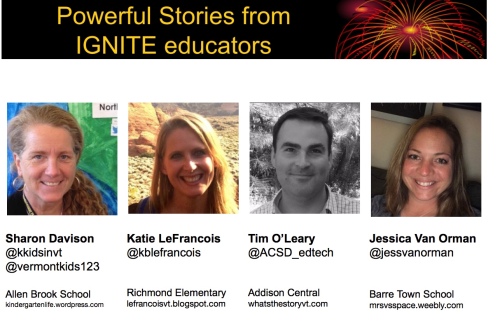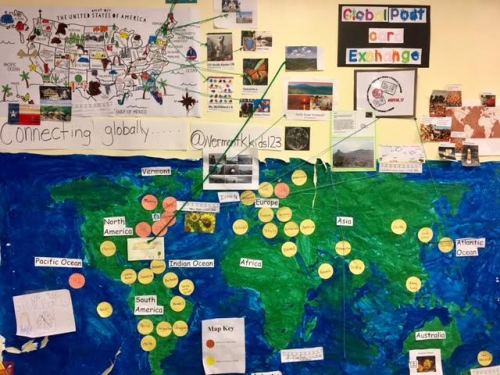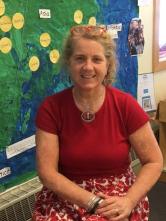In June of each year, I send a welcome letter, a postcard from Vermont with Vermont animals on it, and a map of the United States to each of my students that I will have in kindergarten in the fall. I ask my students to examine the animals and to share with someone at home if they recognize any of the animals and share where they think they may live. I am beginning to help model and create opportunities for my students to become explorers and to think and experience ways they can interact with the natural world.
I do this for many reasons.
Why does this matter?
One important reason is that I want to begin to establish a relationship with all of my students and their families. Kindergarten is an important year and it goes by quickly so I want to take every opportunity I can to connect. Through making personal connections early on I find that both families and their children feel welcomed and a part of their learning experiences.
Through sharing our personal stories of our travels, experiences, and ideas not only to we begin to connect, but I am sharing information about myself as well. This is always helpful when establishing new relationships.
The postcards invite conversations for families to think about why are things where they are? They begin to think about land and water. This helps me explore how all my students will become geographers because they will have opportunities to ask why things are where they are in the world.
Through this postcard exchange, I am helping me to promote conversations about where places are in the world as well as opening up perspectives about what is possible and where you can go and what you might find there/learn.
I am intentional about the cards I send because I am also trying to promote the idea of inquiry. For example; In the cards I sent from Chicago I visited a museum and the artist produced lots of visual art by creating patterns. One of the cards I sent had patterns in it so I am able to pose the following questions on the card giving all my students opportunities to think and share their ideas with a family member. What do you notice? Do you see any patterns? How do you know they are patterns? Look at the postcard I sent you from Wisconsin, do you see any similarities?
The postcards have land, water, trees, art, animals, and other amazing things that give a glimpse of where I have traveled. The variety of photos invites conversations about why is water here along the shore in Chicago? etc. This helps my students think a bit about the geography of the land. This is important because in kindergarten as explorers my students will be investigating Global Goal #15 Life On Land and these experiences help establish some familiarity with the world.
Through these types of questions, I am opening up dialogue for the family to look at the cards and to discuss their observations with their child, while also modeling open-ended questions that promote thinking and curiosity. I am modeling how writing can be used as a tool to communicate and invite my students to send and create cards as well.
What I notice:
In one of the photos, you see a young boy using his holding hand while his other hand guides him to color in the state I am currently visiting(his mom shares he is mentioning my name and where I am while coloring). He is coloring carefully and has a natural grip to help guide him. These are skills that we explore in kindergarten and this helps me get to know a bit about this child. Through an authentic opportunity to connect, I am learning many things about my new kindergartners.
The family shares that he states: “I need to color in Michigan because that is where Mrs. D. is.” The child uses his oral language to talk about the map and have conversations with his family about my travels. Each place I visit I send a postcard to all of my students. This experience invites opportunities to make predictions about where is Mrs. D. going next. In some ways, I am promoting curiosity and deep thinking so this child and others can make predictions and use their imagination about what it might be like there, where I am.
You will notice in the photos that many of my students sent me postcards of how they were using their postcards and maps I sent them. You notice that many of my students mailed me postcards and one of my students found a map on an airplane and used that to mark his travels and mine. What an amazing, authentic connection with how maps can be used to give information and share a story.
Once kindergarten started, many of my students brought me postcards of places they traveled as well. I created a place in kindergarten to display these cards because we are connecting and developing relationships from our experiences and are inspiring each other through our stories.
In the photos, you see the different ways families have used the maps. Some children taped on a wall, others kept on a table. One family added Canada to their map because that was where they were from.
Looking at photos of my new kindergarten students this year I am reminded about the impact visual information can offer and how much I can learn about my students and what they are exploring as they receive the many postcards I mail them throughout my summer travel.
As a National Geographic Certified Educator, I have been very excited about The Learning Framework that National Geographic created. The framework has 3 components; Attitudes, Skills, and Knowledge. I have experienced how these pieces when woven together through inquiry offer endless opportunities for students to begin to think like a geographer and an explorer.
The postcard exchange I create each year begins to create a culture and model how we can all learn from each other when we share our experiences and our stories. This is a wonderful example of how the Learning Framework can be a part of learning. I am inviting opportunities to be curious, promote inquiry, and to connect with others who have a different perspective.
I am a very passionate educator who believes in opening up my classroom globally to help build bridges between people and cultures. I believe that this matters because even young children can think and learn about the world through sharing. I choose postcards because they helped to tell my story of my summer travel and to give authentic images of real things in the world. This inspired my students to do the same.

























